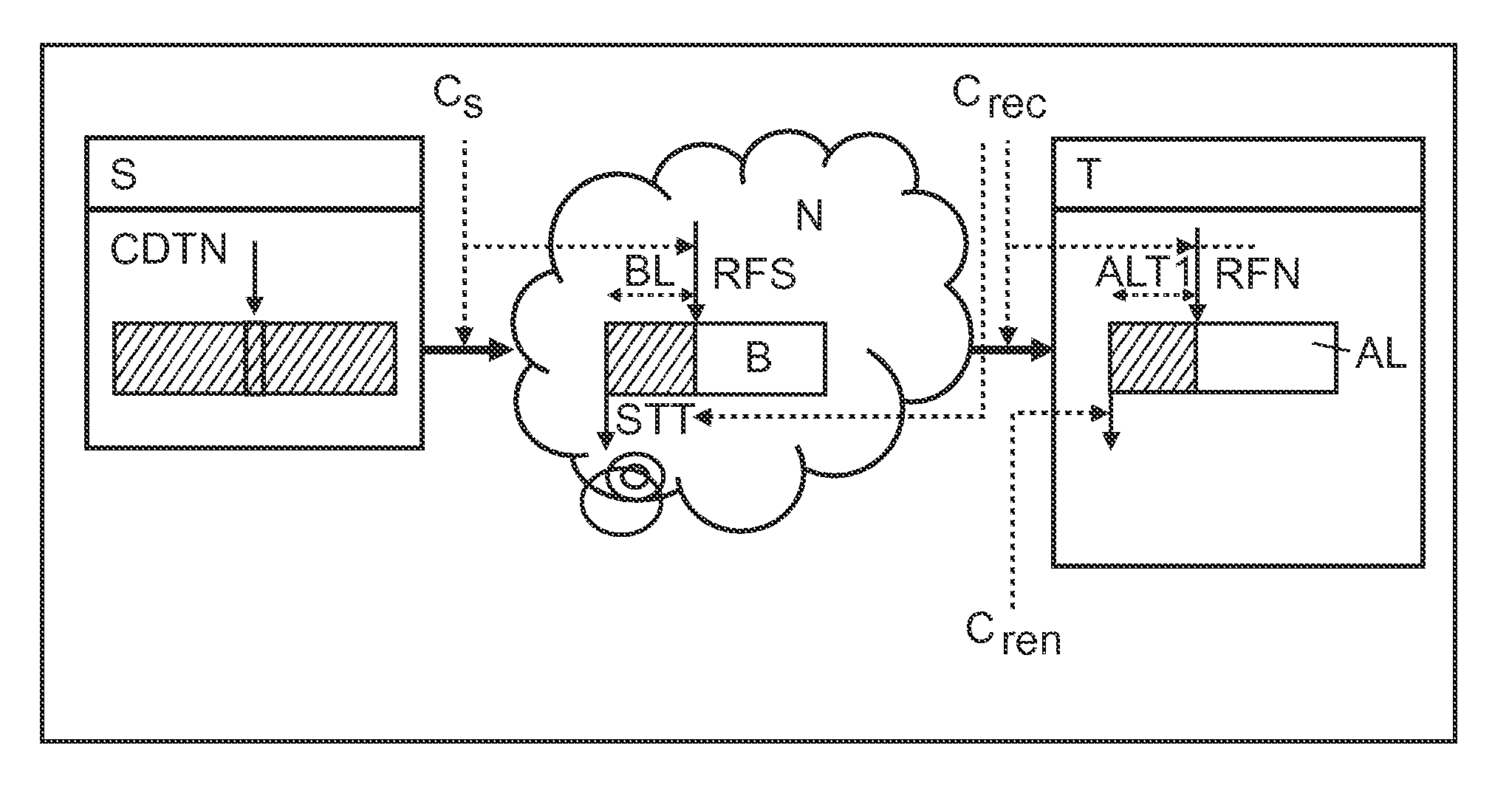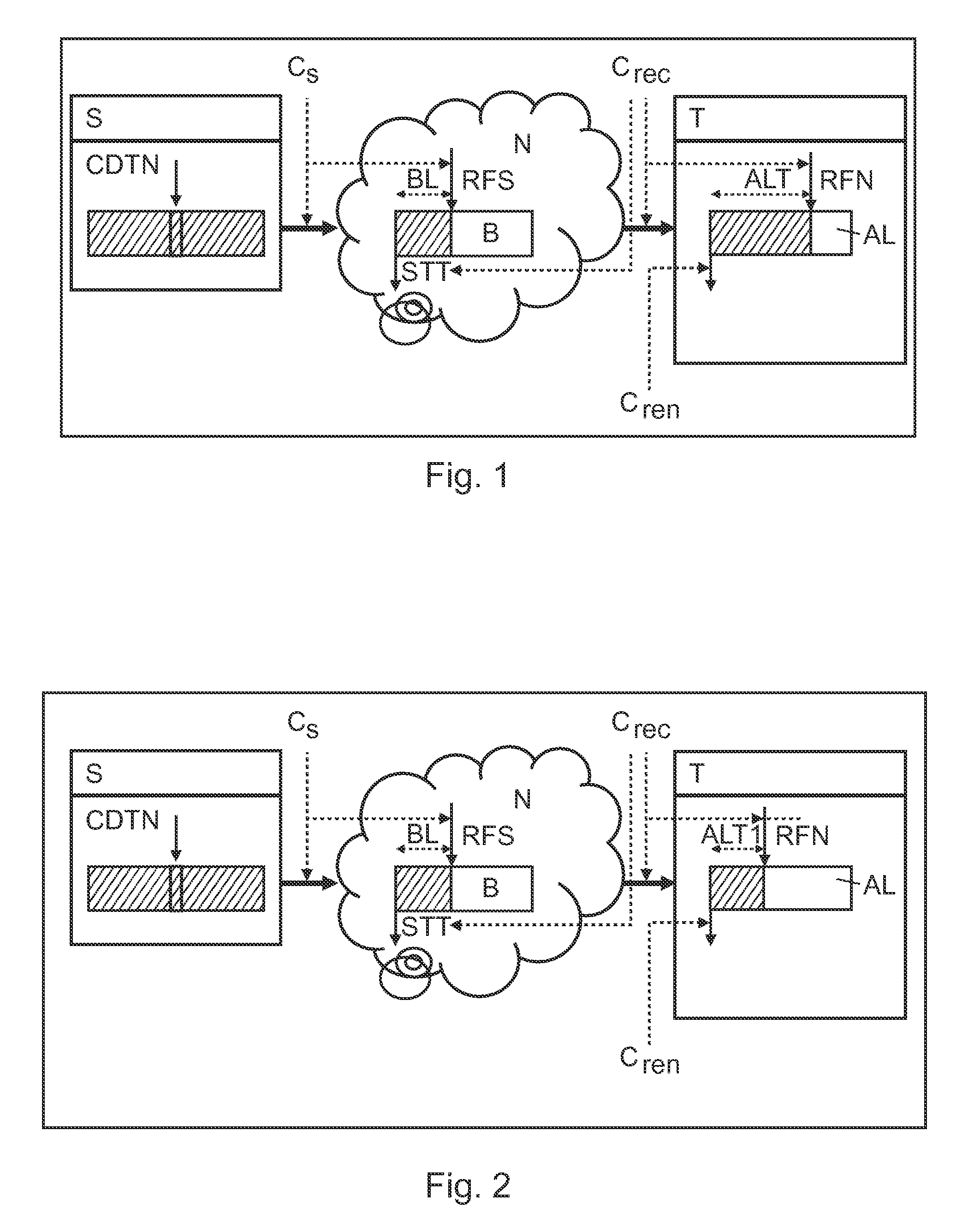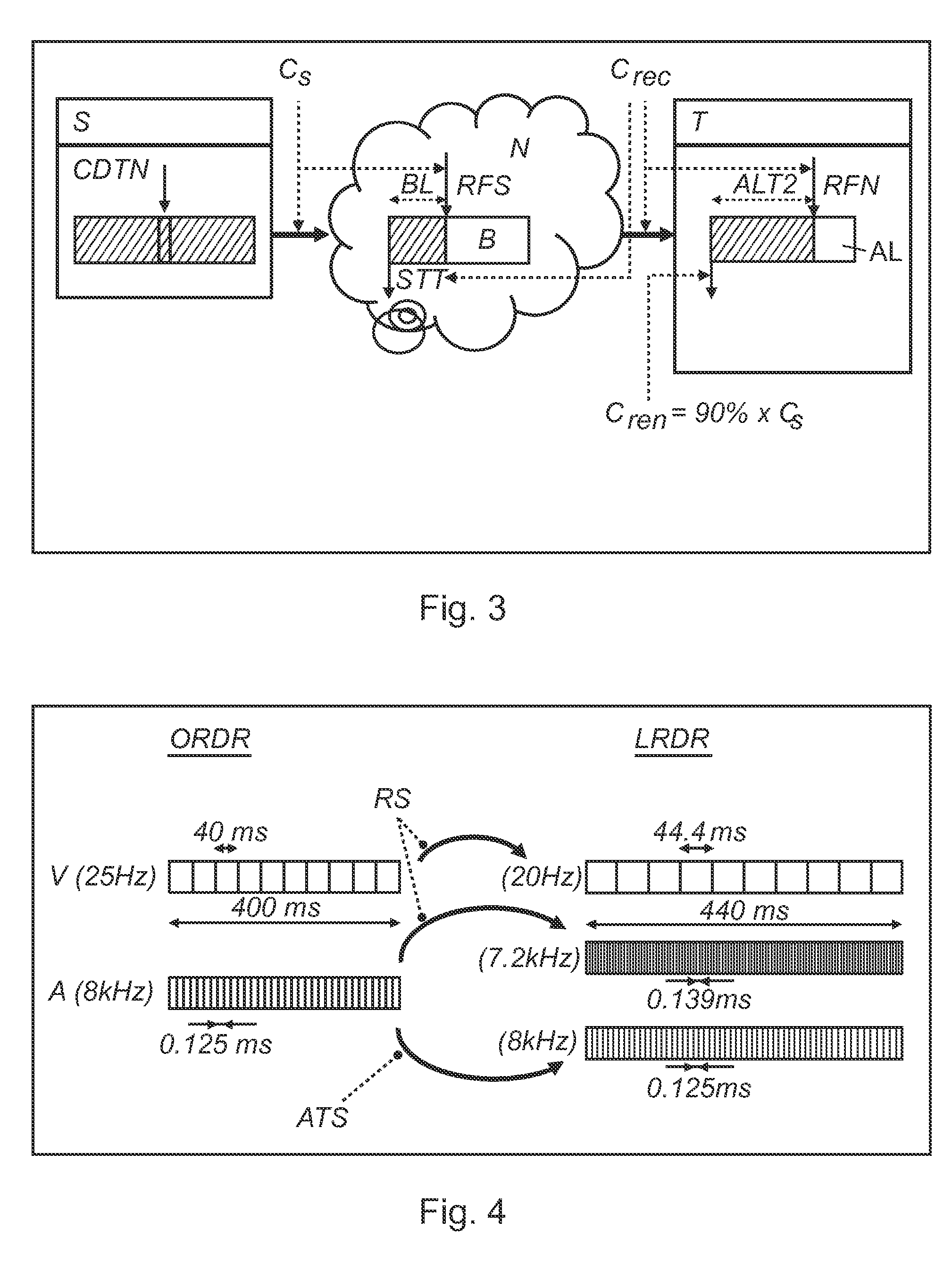Method for buffering streaming data and a terminal device
a terminal device and streaming data technology, applied in the field of buffering streaming data, can solve problems such as inability, and achieve the effect of improving the end-user experien
- Summary
- Abstract
- Description
- Claims
- Application Information
AI Technical Summary
Benefits of technology
Problems solved by technology
Method used
Image
Examples
first embodiment
[0035]FIG. 2 shows a schematic representation of a data processing system according to a The data processing system comprises a server S, at least one terminal T and a network N. Streaming data can be transmitted from the server S at a server data rate CS via the network N and from the network N at a reception data rate Crec to the terminal T. The terminal comprises a buffer AL for buffering the streaming data. The terminal T can render the buffered data at a rending data rate Cren. The network N can comprise a buffer B with a network buffering time BL. The buffer B contains data received from the server RFS but not yet sent to the terminal STT. In FIG. 2, a method of buffering the streaming data is depicted, where normal buffering during a shorter time slot is implemented.
[0036]The first step comprises performing buffering within a time slot that comprises substantially ⅓ of the time slot for normal terminal buffering. The first step represents the initial stage; the player or ter...
second embodiment
[0038]FIG. 3 shows a schematic representation of a data processing system according to a Here, the data processing system comprises a server S, a terminal T and a network N for transporting data from the server S to the terminal T. The network can comprise a buffer B with a network buffer time BL. The buffer B contains data received from the server RFS but not yet sent to the terminal STT. In FIG. 3, a situation is depicted, where the rendering of buffered data with a lower rendering rate Cren is started. The second step comprises starting the rendering with a lower rendering rate. During this phase, the terminal T starts the rendering with a low rendering rate. The server S still sends its data to the network at the same data rate CS, and the network N brings them to the terminal T which receives them at a reception data rate Crec. The main difference with step 1 is that the terminal consumes data at the rendering rate Cren. However, this rate Cren is lower than the server data ra...
third embodiment
[0040]FIG. 4 shows a schematic representation of a resampling in the method of buffering streaming data according to a The original rendering data rate ORDR is resampled to a lower rendering data rate LRDR. The lowering of the rendering data rate requires a resampling of digital content to a lower rate. Media resampling is a well known technique as will be explained with reference to FIG. 4. Video resampling (lower) can be performed by increasing the laps time between two video frames (e.g. moving from 40 ms to 44.4 ms with 10% lower rate). It does not require any complex interpolation as deviation is very limited. Moreover this processing does not create visible artifacts.
[0041]However, it should be noted that the same technique can not be used for audio, because it will lead unpleasant effects (like speeding up / down the audio tape playback). Basic resampling changes the sampling frequency and the audio pitch which creates a noticeable artifact. To avoid this artifact, the propose...
PUM
 Login to View More
Login to View More Abstract
Description
Claims
Application Information
 Login to View More
Login to View More - R&D
- Intellectual Property
- Life Sciences
- Materials
- Tech Scout
- Unparalleled Data Quality
- Higher Quality Content
- 60% Fewer Hallucinations
Browse by: Latest US Patents, China's latest patents, Technical Efficacy Thesaurus, Application Domain, Technology Topic, Popular Technical Reports.
© 2025 PatSnap. All rights reserved.Legal|Privacy policy|Modern Slavery Act Transparency Statement|Sitemap|About US| Contact US: help@patsnap.com



